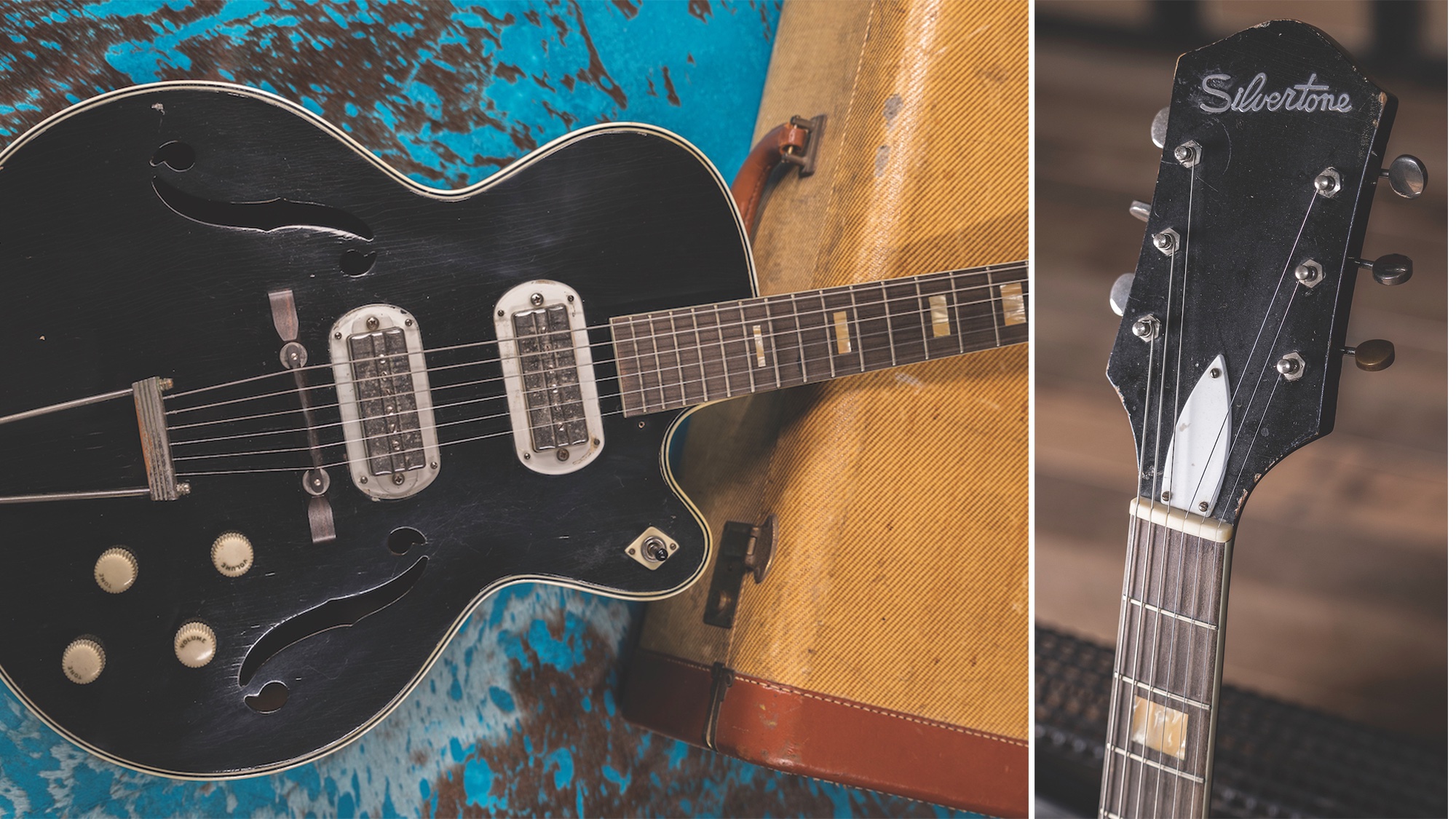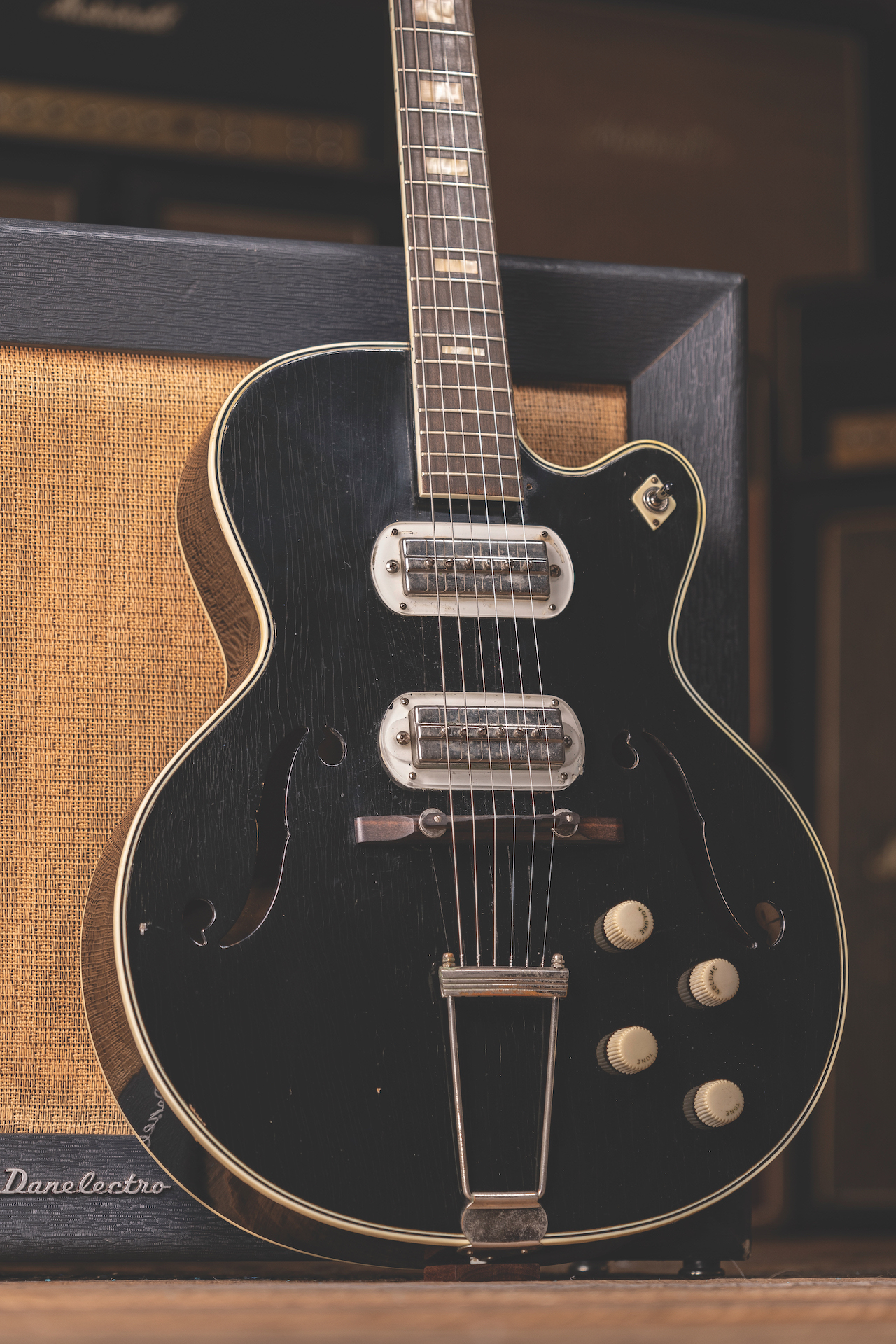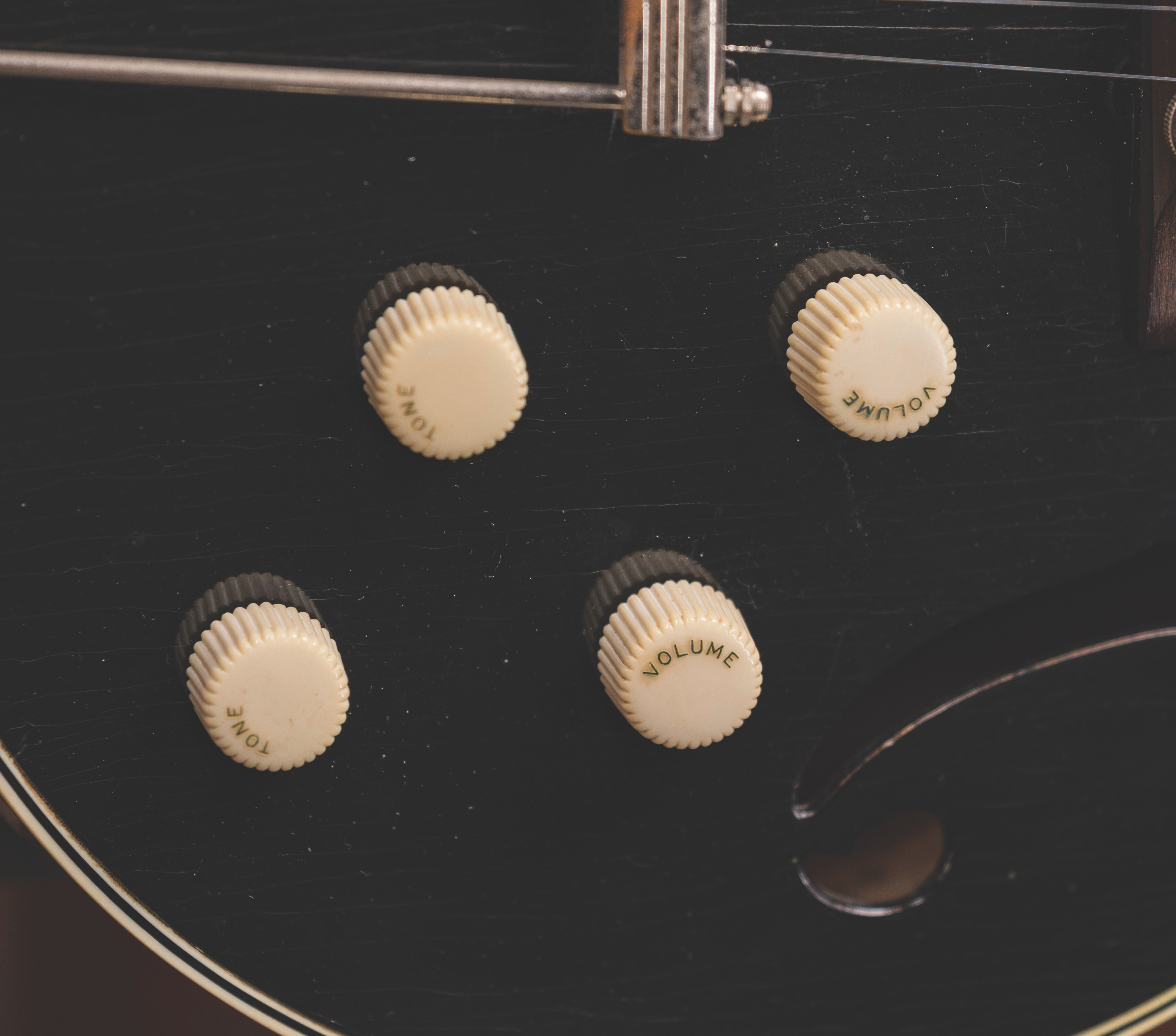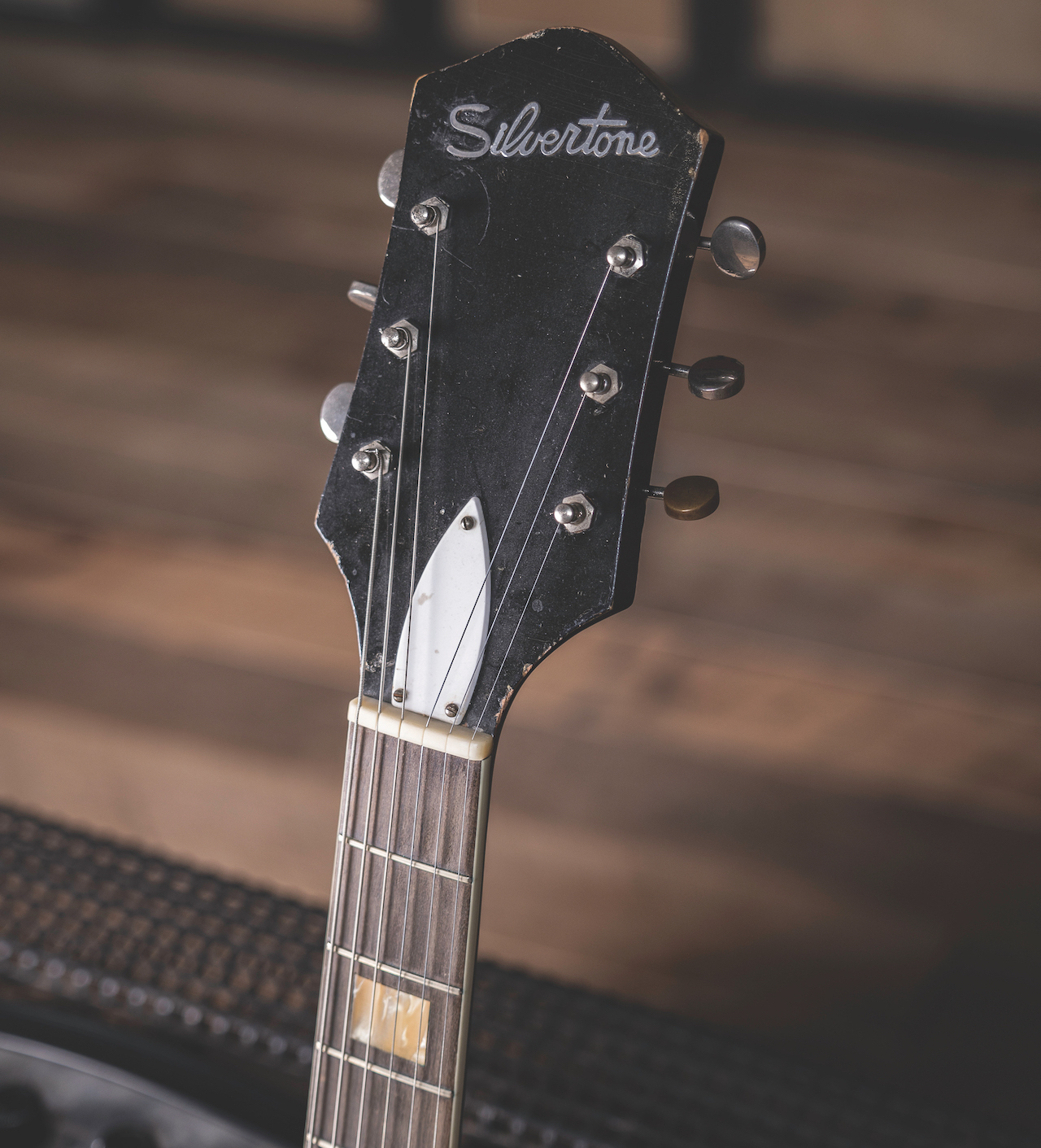“The H63 had everything a player needed to get the job done, and for much less than the competition”: Offered by Silvertone and Harmony, the H63 Espanada was the poor man’s Gibson ES-175
Like many of its Silvertone/Harmony siblings, the H63 Espanada makes up for its more corner-cutting features with a sound, vibe, and look all its own

Years ago, Harmony and Silvertone guitars were mostly seen as low-level pawnshop prizes, funky junk or, at best, short-money noisemakers that might cut a dashing figure in garage bands or punk-blues outfits. But the people who designed and manufactured those guitars took pride in creating the more elevated models that ended up in the hands of stars like Roy Smeck, Buck Owens, Elvis Presley, Howlin’ Wolf, Elmore James, and Keith Richards.
Today, many guitarists now value those upmarket models as viable instruments that have a sound, vibe, and look all their own. Moreover, they can help the player say something original onstage or in the studio, and do so with a sly sense of cool.
Budget jazz box
The Silvertone Model H63 Espanada featured here is just such a guitar. Design-wise, this instrument isn’t far off the template of Gibson’s ES-175 model from a few years earlier, before the new PAF pickup arrived on the jazz box in the late ’50s.
In fact, this Silvertone carries a pair of Gibson-made single-coil pickups that aren’t a mile away from the P90 formula, as well as a single-cutaway body with a pressed archtop made from laminated maple, a glued-in neck of maple (rather than mahogany), a floating rosewood bridge, and other features that put it in the ballpark. The elevated looks are there, too, in the multi-ply body binding, single-ply fingerboard binding, and pearloid block inlays.
Look more closely, though, and you’ll find signs that the quality isn’t fully up to that of Gibson, Epiphone, Gretsch, or other guitar makers of the era. The tuners and trapeze tailpiece are clearly of a lower standard, and the fingerboard is “ebonized hardwood” (often stained maple) rather than the rosewood it appears to be from a distance. The frets are made of a cheaper material and are less skillfully dressed, while the internal construction uses simple block “sound posts” rather than more complex bracing to support the arched top.

Even so, the Harmony/Silvertone H63 had everything a hardworking guitarist or hobby player needed to get the job done, and for much less than the competition.
When introduced in the late 1950s, the Silvertone sold for $135, while the same guitar from Harmony cost, oddly, $199. Compare either of those figures to the $310 you would have paid for the ES-175D, and the H63’s appeal becomes obvious. While you’re at it, note that Gibson’s solid-topped archtop electrics could cost more than double that.
All the latest guitar news, interviews, lessons, reviews, deals and more, direct to your inbox!
That vintage vibe
Bear in mind, Harmony was no newcomer to the business. By the time the model H63 arrived, the company had been making guitars for Sears Roebuck’s Silvertone brand for nearly 60 years.
Harmony was founded in Chicago in 1892 by Wilhelm Schultz, who had emigrated from Hamburg, Germany, a few years earlier. Sears purchased Harmony in 1916 and used its factory to manufacture whatever stringed instruments happened to be in vogue, from ukuleles to mandolins to banjos.
Harmony went independent again after being purchased by former company president Jay Kraus in 1940, and its prime focus returned to guitars with the rock and roll boom. In fact, from the mid ’50s to the mid ’60s, Harmony was the largest guitar maker in the world, churning out around 350,000 instruments a year at its peak.

Collectability has erased the price differences between the Harmony and Silvertone versions of the H63. Depending on condition and seller, either version can go for anywhere in the $2,000-to-$3,500 ballpark.
Most records indicate that the Silvertone version was called the Model H63, while the Harmony-branded model is often tagged with both H63 and Espanada, and the Espanada name sometimes resides on the front of the headstock, where the Harmony name would normally be found. Regardless, they are essentially the same guitars, and the name is colloquially applied to all of them today.
Amid the otherwise so-so build quality and playability, the H63 Espanada’s pickup complement stands out as one of the guitar’s more elevated features. The wide P13 single-coil units were made by Gibson and used on several of the Kalamazoo maker’s earlier ES models prior to the development of the P90 in 1946. Created in 1940 by Gibson engineer Walter Fuller, the P13 uses a pair of Alnico II magnets on either side of a steel block, through which six adjustable threaded steel saddles pass.
These are seen rising above the ridge at the center of the pickup’s top cover in most examples, although some earlier P13s sport an undrilled ridge with hidden pole pieces beneath (which might be either fixed steel slugs or adjustable screw poles). The unit went through a few variations in design before settling in as the pickup commonly found on the Espanada of the late ’50s and early ’60s.

Broadly in the same sonic family as the better-known P90, the P13 usually reveals itself as a slightly warmer, darker pickup with relatively substantial output for a single-coil, and it has become a popular “hidden gem” with many jump-blues players.
Such is the renewed interest that respected pickup makers Curtis Novak and Dave Stephens have both offered re-creations of this final iteration of the Gibson component made for Harmony/Silvertone guitars. Catalog-grade reissue maker Eastwood has also created its own rendition of the complete instrument as the Airline Espanada, which offers much of the overall vibe of the original, without precisely replicating its construction and components.
Essential ingredients
• Single-cutaway hollowbody archtop made from maple ply
• Multi-ply body binding, single-ply fretboard binding
• Glued-in maple neck, 25” scale length
• “Ebonized hardwood” (i.e. stained maple) fretboard with pearloid block inlays
• Two Gibson single-coil P13 pickups
• Individual volume and tone controls for each pickup
Dave Hunter is a writer and consulting editor for Guitar Player magazine. His prolific output as author includes Fender 75 Years, The Guitar Amp Handbook, The British Amp Invasion, Ultimate Star Guitars, Guitar Effects Pedals, The Guitar Pickup Handbook, The Fender Telecaster and several other titles. Hunter is a former editor of The Guitar Magazine (UK), and a contributor to Vintage Guitar, Premier Guitar, The Connoisseur and other publications. A contributing essayist to the United States Library of Congress National Recording Preservation Board’s Permanent Archive, he lives in Kittery, ME, with his wife and their two children and fronts the bands A Different Engine and The Stereo Field.

